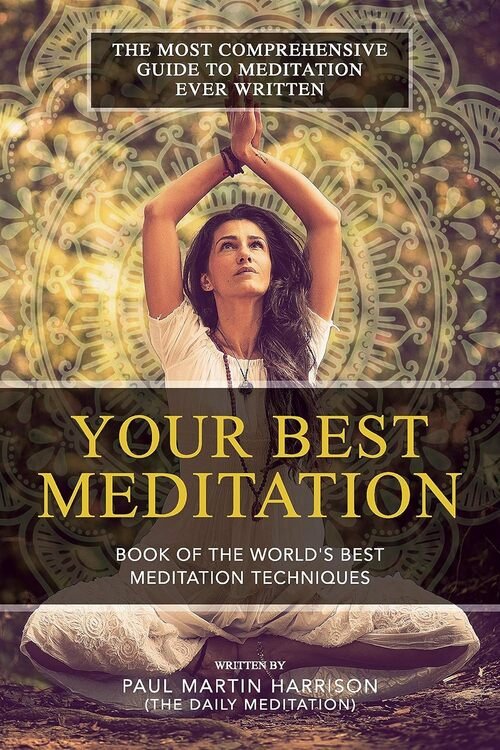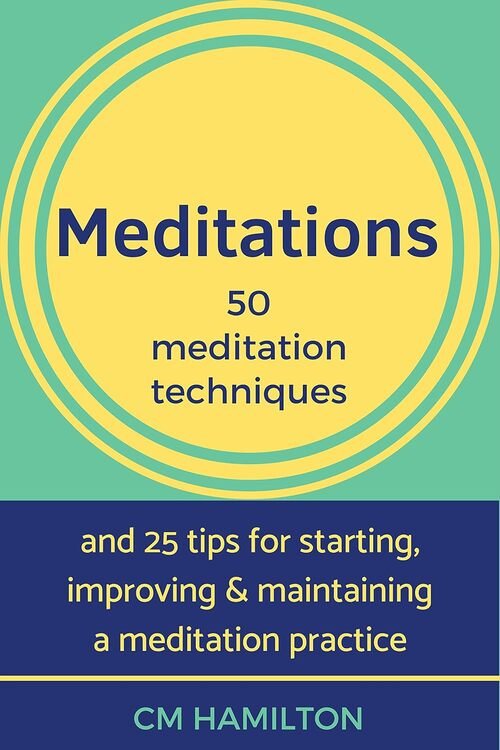Meditation Techniques
Meditation Techniques: Meditation has become an essential part of many people’s routines, offering a sanctuary from the chaos of everyday life.
If you’ve ever wondered how to integrate this ancient practice into your modern lifestyle, you’re not alone.
With countless books on the subject, it can be overwhelming to choose one that meets your needs.
This review narrows down your options by exploring two standout books in the meditation genre:
“Your Best Meditation: Book of the World’s Best Meditation Techniques” by Paul Harrison and “Meditations: 50 Meditation Techniques” by CM Hamilton.
Each of these books offers a unique approach to meditation techniques, but which one is best for you?
Let’s dive deeper.

Why Meditation Techniques Matter
Before we get into the reviews, it’s crucial to understand why learning a variety of meditation techniques is beneficial.
Meditation is not a one-size-fits-all practice.
Different methods work better for different people, depending on their goals, lifestyle, and spiritual beliefs.
Some people may find mindfulness meditation life-changing, while others may resonate more with transcendental or guided visualizations.
By exploring a range of techniques, you can discover what works best for you, making your meditation practice more effective and enjoyable.
Both Paul Harrison’s and CM Hamilton’s books cater to this need, offering diverse practices to deepen your understanding of meditation.

Overview of “Your Best Meditation: Book of the World’s Best Meditation Techniques” by Paul Harrison
Paul Harrison’s book, “Your Best Meditation: Book of the World’s Best Meditation Techniques”, stands out for its comprehensive and well-researched approach.
Harrison has spent years exploring different cultures and spiritual traditions to bring readers a rich collection of meditation techniques from around the globe.
The book is structured to introduce readers to a wide array of practices, from ancient traditions like Zen meditation to modern techniques like body scan relaxation.
Harrison doesn’t just tell you what each method is; he provides detailed instructions, making it easy for beginners and experienced meditators alike to dive in.
What Makes It Unique?
One of the **book’s strongest points** is its emphasis on **tailoring your meditation practice**.
Harrison understands that what works for one person may not work for another.
He encourages readers to experiment and find their best fit, whether it’s mindfulness, loving-kindness, or movement-based meditation.
He also provides cultural context for each technique.
Understanding the origins of a meditation practice can deepen your connection to it, making it more meaningful.
For example, when discussing Vipassana meditation, Harrison explains its roots in Buddhist traditions, helping readers appreciate the spiritual significance of the practice.
Pros of Paul Harrison’s Book
1.Diverse Techniques: The book features a wide range of practices, ensuring there’s something for everyone.
2. Detailed Instructions: Step-by-step guides make each technique easy to follow.
3. Cultural Context: Provides background information, enriching the reader’s understanding.
4. Practical Tips: Harrison offers advice on overcoming common meditation challenges, like dealing with a wandering mind.
Cons of Paul Harrison’s Book
1. Overwhelming for Beginners: With so many techniques, beginners may feel overwhelmed at first.
2. Lengthy Explanations: While the cultural context is valuable, some readers may find these sections lengthy.
Overview of “Meditations: 50 Meditation Techniques” by CM Hamilton
CM Hamilton’s “Meditations: 50 Meditation Techniques” takes a more straightforward and minimalist approach to the world of meditation.
The book focuses on 50 unique practices, each presented concisely and without unnecessary fluff.
Hamilton aims to make meditation **accessible and easy to understand**, especially for those who may not have a lot of time.
Hamilton’s approach is refreshingly direct.
Each meditation technique is described in a simple, actionable way, allowing readers to get started without feeling intimidated.
The techniques cover a broad spectrum, from breathing exercises to visualization practices.
Making it a great resource for anyone wanting to explore meditation without diving too deeply into theory or background.
What Makes It Unique?
The simplicity and practicality of this book are its greatest strengths.
Hamilton’s philosophy is that meditation should be accessible to everyone, regardless of spiritual background or experience level.
The book is formatted almost like a handbook, where you can quickly pick a technique and try it out, making it perfect for those who prefer a no-nonsense approach.
Pros of CM Hamilton’s Book
1. Simple and Direct: Clear, concise instructions make each technique easy to understand and practice.
2. Quick Reference Guide: Great for those who want to jump straight into meditation without reading long explanations.
3. Diverse Methods: Covers a variety of practices, from calming to energizing techniques.
4. Portable and User-Friendly: The layout makes it easy to flip through and find a practice that suits your mood.
Cons of CM Hamilton’s Book
1. Lacks Depth: While the techniques are easy to follow, some readers may crave more background or philosophical context.
2. Less Personalization: The book doesn’t offer much guidance on how to tailor meditation practices to individual needs.
Side-by-Side Comparison: Which Book is Better?
1. Depth vs. Simplicity
– Paul Harrison’s Book: If you’re looking for depth and cultural richness, “Your Best Meditation” is your go-to.
It offers more background and detailed instructions, ideal for those who want a well-rounded understanding of each technique.
– CM Hamilton’s Book: If you prefer a straightforward and quick reference guide, “Meditations: 50 Meditation Techniques” is better.
It’s perfect for people with limited time who want to get started immediately.
2. Beginner-Friendly Approach
– Paul Harrison: While comprehensive, his book may feel overwhelming for complete beginners. However, if you’re willing to take your time, the detailed instructions will guide you well.
– CM Hamilton: More approachable for beginners. The simple and concise format makes it easy to jump in without feeling lost.
3. Range of Techniques
Both books cover a broad spectrum of meditation techniques, but Harrison’s work dives deeper into cultural context and history.
Hamilton’s book, on the other hand, is more of a “try it and see” approach, which some may find more practical.
4. Practicality and Usability
– Paul Harrison: Great for those who want to make meditation a significant part of their lives and are willing to invest time in learning.
– CM Hamilton: Ideal for people who want quick, practical methods they can apply instantly, without delving into too much theory.
Who Should Read These Books?
Your Best Meditation: Book of the World’s Best Meditation Techniques” by Paul Harrison
This book is ideal for:
– Spiritual Seekers: If you’re interested in the cultural and spiritual origins of meditation, this book offers a deep dive.
– Dedicated Practitioners: Those willing to invest time in experimenting with different techniques will find it incredibly rewarding.
– People Seeking Personalization: Harrison’s emphasis on finding a meditation style that works for you is invaluable.
Meditations: 50 Meditation Techniques by CM Hamilton
This book is perfect for:
– Beginners: If you’re new to meditation and want to try simple methods, Hamilton’s guide is a great starting point.
– Busy Individuals: Those with limited time will appreciate the concise, straightforward format.
– Practical Learners: If you want actionable steps without the fluff, this book is for you.
Best Books on Meditation Techniques Conclusion
Best Books on Meditation Techniques: Both “Your Best Meditation” by Paul Harrison and “Meditations: 50 Meditation Techniques” by CM Hamilton are excellent resources, but they serve different needs.
Paul Harrison’s book is a comprehensive guide that offers cultural insights and personalized advice, making it ideal for those who want a deep, meaningful experience.
CM Hamilton’s book, on the other hand, is a practical, no-frills approach that makes meditation accessible to everyone, especially beginners.
When choosing between these best books on meditation techniques, consider your personal preferences, available time, and spiritual interests.
Whether you’re looking for a deep spiritual journey or a simple daily practice, these books offer valuable guidance to enhance your meditation experience.




